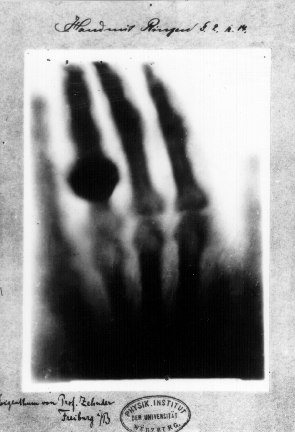It still might.
Antony J. Blinken, Secretary of State September 4, 2024
As part of a series of coordinated actions across the U.S. Government, the Department of State is taking three steps today to counter Kremlin-backed media outlets’ malicious operations seeking to influence or interfere in the 2024 U.S. elections.
Moscow’s methods of targeting those it identifies as adversaries are well known – from its illegal and unwarranted invasion of sovereign nations to the unjust imprisonment of innocent persons, to cyberattacks and meddling in foreign elections, to conducting sham elections in Russian-controlled territories of Ukraine.
In addition, we now know that RT, formerly known as Russia Today, has moved beyond being simply a media organization. RT has contracted with a private company to pay unwitting Americans millions of dollars to carry the Kremlin’s message to influence the U.S. elections and undermine democracy. Moreover, RT’s leadership has direct, witting knowledge of this enterprise.
To counter Russia’s state-backed covert influence operations, the Department is acting to hinder malicious actors from using Kremlin-supported media as a cover to conduct such covert influence activities. The Department’s actions include introducing a new visa restriction policy, Foreign Missions Act determinations of RT’s parent company Rossiya Segodnya, and other subsidiaries RIA Novosti, RT, TV-Novosti, Sputnik and Ruptly, and announcing a Rewards for Justice offer.
Today’s announcement highlights the lengths some foreign governments go to undermine American democratic institutions. But these foreign governments should also know that we will not tolerate foreign malign actors intentionally interfering and undermining free and fair elections. The United States will continue to both expose those state-sponsored actors who attempt to undermine our democratic institutions and hold them accountable for those actions.
https://www.tennessean.com/story/news/crime/2024/09/04/indictment-russians-tennessee-company-tenet/75074263007/
An indictment unsealed Wednesday alleges a Tennessee content creation company was the tool a team of Russian propagandists used to infiltrate U.S. audiences with Kremlin-backed messaging.
Two Russian nationals who worked for Russia Today, a Russian state-controlled media outlet, were indicted on accusations they funneled nearly $10 million to a Tennessee-based online content creation company to publish English-language videos on social media sites like TikTok, Instagram, X and YouTube. The company's more than 2,000 videos posted in the last 10 months have been viewed more than 16 million times just on YouTube, according to the indictment.
The indictment, unsealed in the federal court for the Southern District of New York, doesn't identify the Tennessee company, but descriptions in the indictment match those of Tennessee-based Tenet Media.
The indictment states the company described itself on its website as "a network of heterodox commentators that focus on Western political and cultural issues." Tennessee-based company Tenet Media has the same message on its homepage. The indictment states the Tennessee-based company was incorporated around Jan. 19, 2022, which matches records from the Tennessee Secretary of State's Office. The indictment says the company applied to the Tennessee Department of State to conduct business on May 22, 2023.
Tennessean reporters have submitted a message seeking comment in the submission form on Tenet Media's website and emailed requests for comment to commentators listed on Tenet Media's website.
This is the kind of misinformation that these organizations are using as part of a plan that would meet the Kremlin goal to "secure victory" for the "preferred outcome of the 2024 election." 11/ pic.twitter.com/S2qKFqZ5YB
— Mark Hertling (@MarkHertling) September 4, 2024
NEW: CNN has independently confirmed the Russia funded US media company that paid American right-wing social media stars is Tenet Media, based in Tennessee.
— Donie O'Sullivan (@donie) September 4, 2024
Some very big names tied up in all of this.
Reporting w/ @ZcohenCNN @evanperez @snlyngaas https://t.co/7CRWrnhp8o
By my count we're at three to five black swans so far this election so we've all gotten a bit jaded but this does have potential and it's already apparently shaking some people up.
I said, as a connoisseur, the RT indictment is one of the best I've read. And really well crafted to work against election interference.
— emptywheel (Count Chocula) (@emptywheel) September 4, 2024
Just starting on Doppelganger. https://t.co/qz2CYsKzf6
MAGA lawyer telling the podcasters and media people not to rat. pic.twitter.com/IH1QUo9rDZ
— Ron Filipkowski (@RonFilipkowski) September 4, 2024
OLD: Law and order!
— Aaron Rupar (@atrupar) September 5, 2024
NEW: Snitches get stitches https://t.co/mX2pMQl8MI
On a possibly related note.
NEW leak: Trump's co-campaign managers Chris LaCivita and Susie Wiles warn staff in internal email to stop talking to the press less than an hour ago, with the threat of termination. There must be a hot story in the works... pic.twitter.com/Buob6psJ5z
— Tara Palmeri (@tarapalmeri) September 4, 2024
The new DOJ charging documents raise a curious question: DOJ charges two lower-level employees of a Russian front company, but despite providing chapter and verse about the complicity of the two "Founders" of that company, the Founders are not charged.
— Andrew Weissmann (weissmann11 on Threads/Insta)🌻 (@AWeissmann_) September 5, 2024
My Suspicion (based on my… https://t.co/prfeVUc2bC
Trump scheduling a briefing call with house republicans this weekend, Wiles and LaCivita sending emails to halt comms with the press, Dhillon telling everyone to lawyer up and keep quiet, Elon posting nearly a hundred times today - This Russia indictment has them shook.
— Mueller, She Wrote (@MuellerSheWrote) September 5, 2024
Kremlin “documents showed that Kremlin 1st deputy chief of staff Sergei Kiriyenko had directed a network of political strategists to promote American isolationism, stir fear over the United States’ border security & attempt to amplify U.S. economic & racial…
— Laura Rozen (@lrozen) September 5, 2024
NEW: CNN has independently confirmed the Russia funded US media company that paid American right-wing social media stars is Tenet Media, based in Tennessee.
— Donie O'Sullivan (@donie) September 4, 2024
Some very big names tied up in all of this.
Reporting w/ @ZcohenCNN @evanperez @snlyngaas https://t.co/7CRWrnhp8o
2/ So like you assume the money eventually traces back to the Scaifes or the Kochs or whoever funds the Federalist or some other random. But you never know. So it's probably easy to plug into that don't ask too many questions framework.
— Josh Marshall (@joshtpm) September 4, 2024
The content creation company that federal prosectors say was a tool of Russian propagandists is Tenet Media, according to The Tennessean. Its apparently unwitting stars include Dave Rubin, Tim Pool, and Benny Johnson, seen below mocking the Russia "hoax" https://t.co/UKDlNXMaM0 pic.twitter.com/CRbEX3k78x
— Matthew Gertz (@MattGertz) September 4, 2024
Lots of major GOP and MAGA figures are linked with Tenet indirectly...
Interesting how the “Campaign Topics” exactly mirror JD Vance’s campaign talking points https://t.co/OT8YtYNucf
— Asha Rangappa (@AshaRangappa_) September 4, 2024
Elon Musk naturally promoted nonsense peddled by Tenet Media, which was financed by now-indicted Russian operatives. https://t.co/kzENMUqdxX
— Michael Weiss (@michaeldweiss) September 4, 2024
or directly.
Benny Johnson was one of the people who convinced Sen. Mike Lee to create his @BasedMikeLee account #utpol pic.twitter.com/newEVAs6Iq
— BRYAN SCHOTT (@SchottHappens) September 4, 2024
I sure am looking at this Junior clip with Tim Pool with a fresh set of eyes now! https://t.co/DS0Pox9J4F
— Ron Filipkowski (@RonFilipkowski) September 5, 2024
That’s why they’re called “useful idiots.” And now they should wonder why Moscow thought it was worthwhile to spend $10 million to line their pockets and keep them producing content. https://t.co/EvoqSnOEFF
— David Corn (@DavidCornDC) September 4, 2024
!! From Justice Dept court filings. The alleged Russian propaganda playbook for 2024 election interference
— Scott MacFarlane (@MacFarlaneNews) September 4, 2024
Topics and target audience ======> pic.twitter.com/uyeNg8KgXt
Funny moment in the Tenet indictment: a Tenet founder, who have told Youtubers their funding is coming from a Western European businessman, emails the investor for more money. When no one responds, Tenet's founder drops the pretense and googles "time in Moscow" pic.twitter.com/4eXJCNWn5h
— Will Sommer (@willsommer) September 4, 2024
The good news is there's someone out there with deep pockets willing to put real money into alternative media and actually pay their talent well.
— Matthew Gertz (@MattGertz) September 4, 2024
The bad news is that it's the Kremlin. https://t.co/pQ2jIazAXO
Wow suddenly Tim Pool having takes like this makes way more sense. pic.twitter.com/Q43eeV8XhT https://t.co/qIsCML9Wwl
— highprogressive🥂🇦🇶 (@highprogressive) September 4, 2024
This was originally going to be a multi-topic tweet ending on a light note. When the big news of the day provided me with too much material, I decided to save the rest for later but keep the bird where he was because I thought we could all use it.
There's no intentional metaphor here but I'm sure you can come up with one.
If you feel like watching a cockatoo play with his dinosaur... https://t.co/5tOtTrPL9d via @YouTube
— Mark Palko (@MarkPalko1) September 5, 2024






